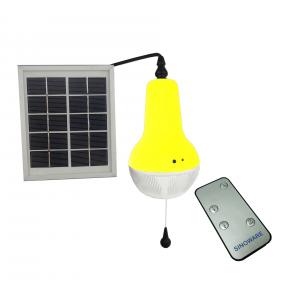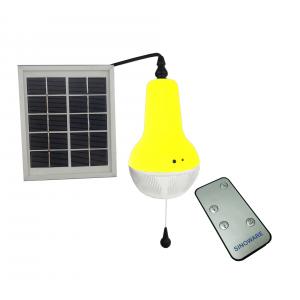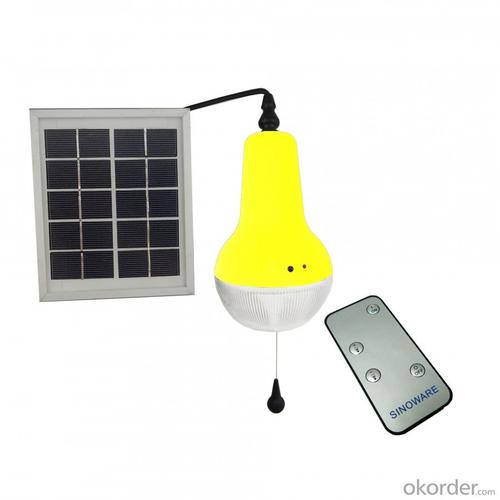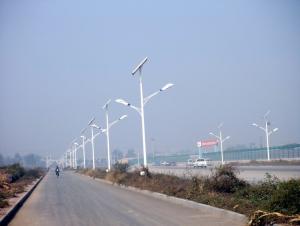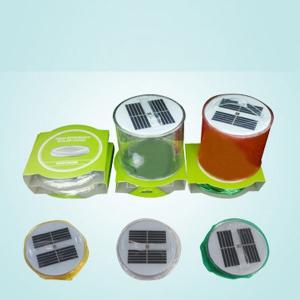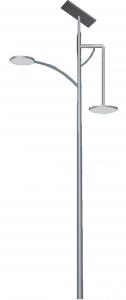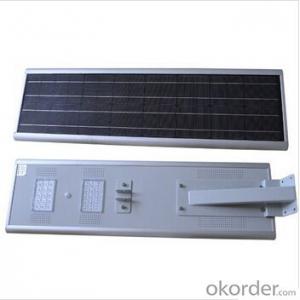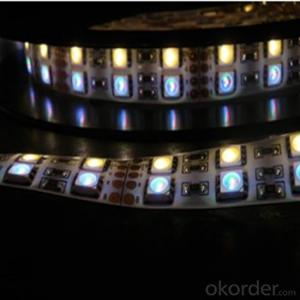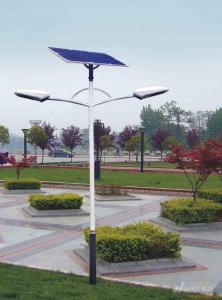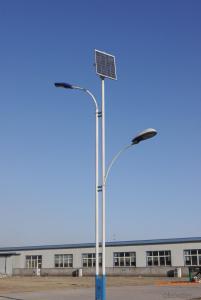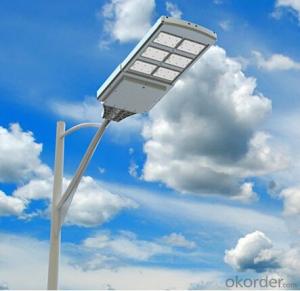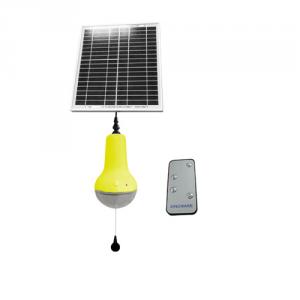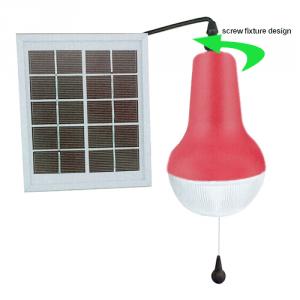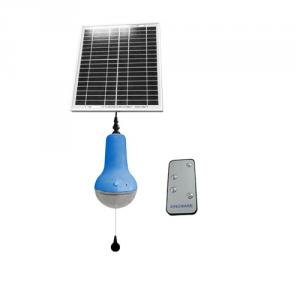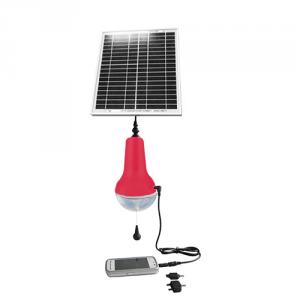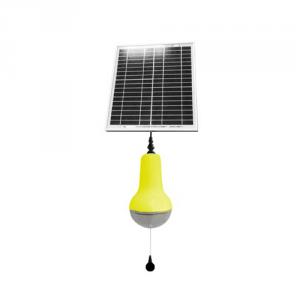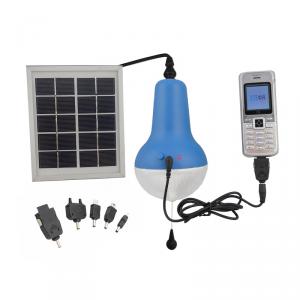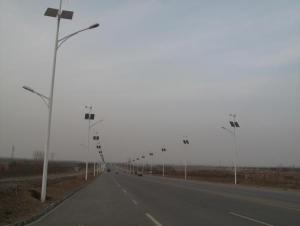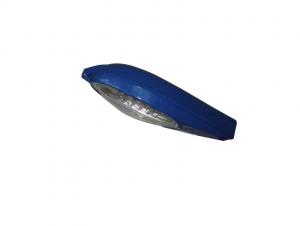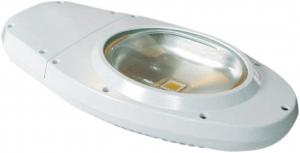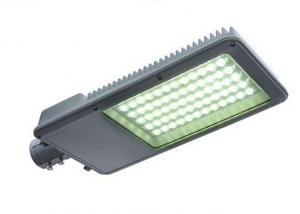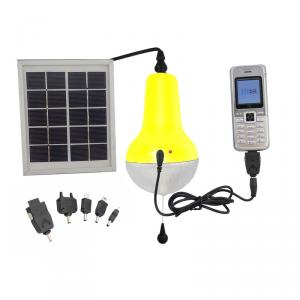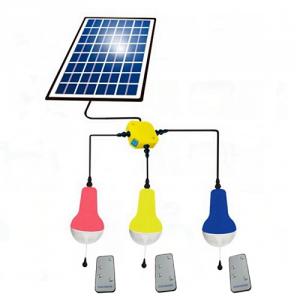Solar Light Patio Umbrella - China Factory Brightest Rechargeable Solar Lamp with Remote Control Indoor Solar Lighting Yellow
- Loading Port:
- Shenzhen
- Payment Terms:
- TT
- Min Order Qty:
- 1000Sets set
- Supply Capability:
- 20000 Sets Per Month set/month
OKorder Service Pledge
OKorder Financial Service
You Might Also Like
This China factory brightest rechargeable solar lamp with remote control indoor solar lighting yellow lasts for 24+ hours on low more than 12 hours at middle and 4+ hours on high containing 10 LED lights this solar powered led light collects energy from the sun by day and provides clean, non-toxic light at night. can also be operated by remote control with more than 5 meters controlling range.
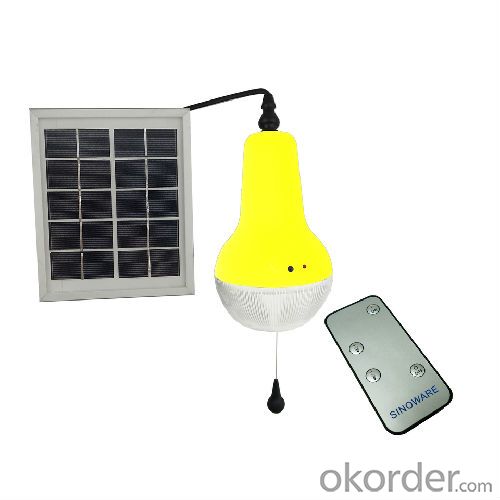
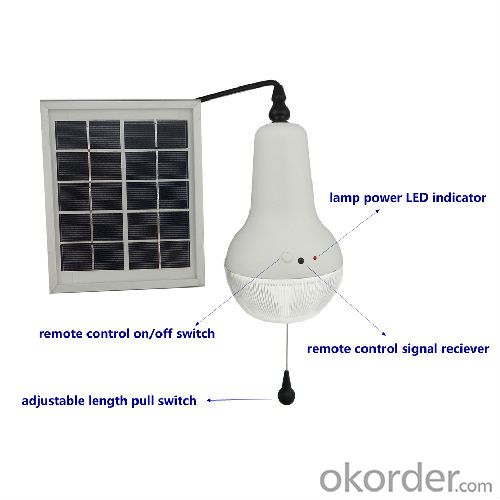
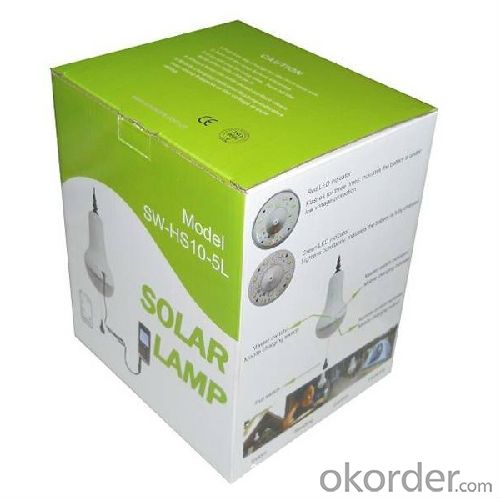
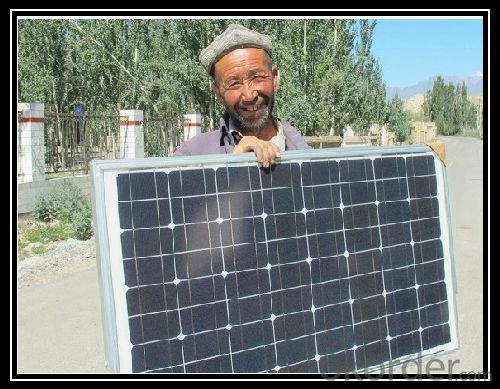
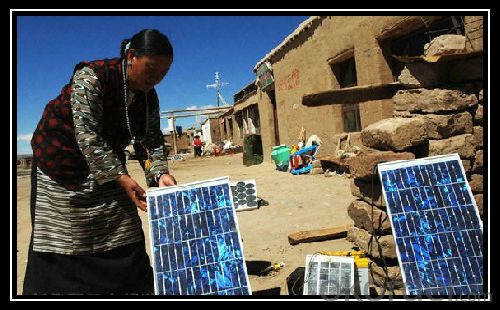
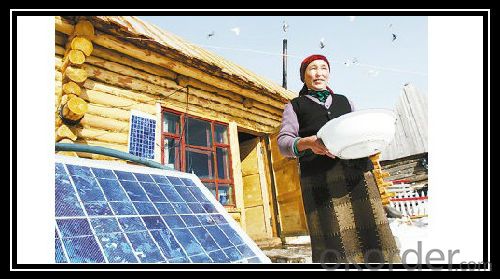
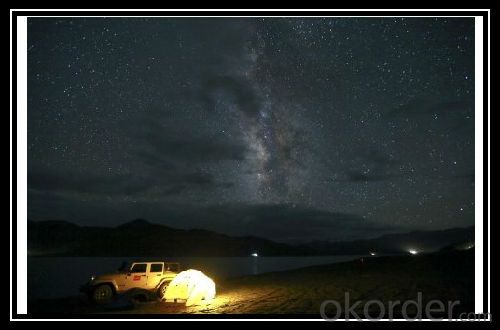
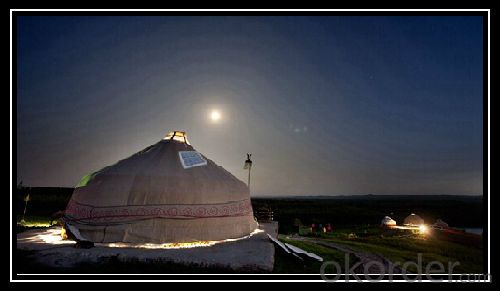
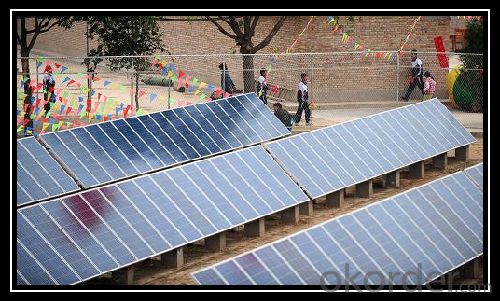
Features
1. Solar Panel: 1.7W/5V polycrystalline silicone panel with 5M cable
2. Battery: 3.7V/2200MAh
3. Lamp: 1pc lamp with 10pcs LED
4. Lightness: >150lm, dimmable; Remote control distance is over 5m
5. Three steps of dimmable lumen;
6. Expandable solar panels and lamps
7. low energy consumption
8. Integrated pull-switch with adjustable length
9. Screw design on the hanging cable head to fix the lamp
10. Certificate: CE, RoHS.
11. Warranty period: 1.5 years.
Usage/Applications
Suitable for home maintenance, outdoor activities, hiking, map reading, night fishing, night flying, camping, sailing, caving, hunting, etc
Home lighting/House lighting
Remote area, mountainous area, desert area, grassland area
Village, country area
Camping, outdoor activities, travel.
Lighting at night.
Customized options
Customize your solar lamp by picture or by technical datas.
Packing & Delivery
Package:
1 x solar lamp
1 x remote control
1 x 1.7w 5v solar panel
1 x 5m cable
1 x gift box
Delivery:
|
Shipping Service |
Estimated Delivery Time |
|
DHL |
2-8 business days |
|
FedEx |
3-8 business days |
|
TNT |
2-10 business days |
|
UPS |
1-7 business days |
|
EMS |
6-14 business days |
|
ePacket |
7-12 business days |
|
China Post Air Mail |
7-15 business days |
|
China Post SAL |
14-30 business days |
|
Air freight |
3-10 business days |
|
By Sea |
30-40 business days |
1. 3-5 business days for Sample Orders; 7-30 business days for Bulk Orders for Bulk Orders.
2. "Business days" means Monday-Friday, excluding holidays.
3. DHL and UPS cannot ship to military or P.O. boxes address
4. The Shipping Service above is for reference only, for any other questions, please feel free to contact us.
Factory
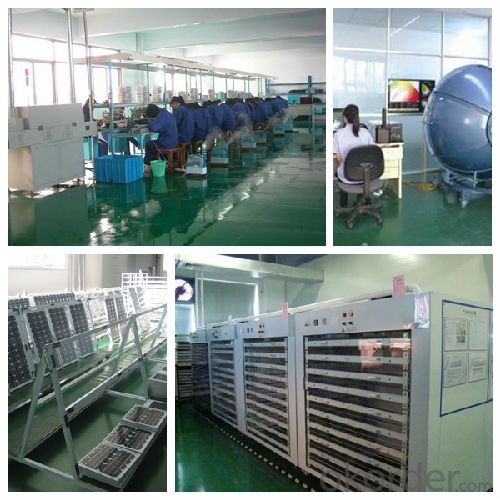
- Q: Are solar lights suitable for outdoor patios and decks?
- Yes, solar lights are suitable for outdoor patios and decks. They provide a convenient and eco-friendly lighting solution without the need for electrical wiring or outlets. Solar lights can enhance the ambiance of outdoor spaces, provide illumination for safety, and are easy to install and maintain.
- Q: How do you dispose of solar lights properly?
- To dispose of solar lights properly, it is important to follow some guidelines to ensure that they are safely and responsibly discarded. Here are a few steps to take: 1. Reuse or Donate: If your solar lights are still in good working condition, consider reusing them in another area of your property or donating them to someone who can use them. This helps reduce waste and extends the life of the lights. 2. Remove Batteries: Before disposing of solar lights, remove the batteries (if they are replaceable). Batteries contain harmful chemicals and should be recycled separately at a designated battery recycling facility. 3. Separate Components: Solar lights are usually made up of different materials like plastic, metal, glass, and electronics. Disassemble the lights carefully and separate the components for proper recycling. 4. Recycle: After separating the components, check with your local recycling center to determine which materials can be recycled. Plastic, metal, and glass components can often be recycled, but electronics may need to be taken to an electronic waste recycling facility. 5. Check with the Manufacturer: Some manufacturers have specific recycling programs or guidelines for their solar lights. Check their website or contact them directly to inquire about the proper disposal method for their products. 6. Consult Local Regulations: Local regulations may differ regarding the disposal of solar lights. Check with your local waste management authority or municipality to ensure you comply with any specific guidelines or restrictions. Remember, it is crucial to avoid throwing solar lights in regular trash bins or dumping them in the environment as they can contribute to pollution and harm wildlife. By following these steps, you can ensure that your solar lights are disposed of properly, minimizing their impact on the environment.
- Q: How do I choose the right solar lights for my needs?
- When choosing the right solar lights for your needs, there are a few key factors to consider. Here are some tips to help you make an informed decision: 1. Purpose: Determine the purpose of your solar lights. Are you looking for decorative lights, security lights, or functional outdoor lighting? This will help you narrow down the options and choose the right type of solar lights. 2. Brightness: Consider the brightness level you require. Solar lights come in different lumens, which measure the intensity of light emitted. If you need brighter lights for security purposes, opt for higher lumen solar lights, while lower lumens are suitable for decorative purposes. 3. Location: Assess the location where you plan to install the solar lights. Consider the amount of sunlight the area receives throughout the day. If the location is shaded or receives limited sunlight, choose solar lights with separate solar panels that can be positioned in a sunnier spot. 4. Battery Capacity: Check the battery capacity of the solar lights. A larger battery capacity will ensure longer illumination hours, especially during cloudy days. Look for lights with a higher mAh (milliampere-hour) rating for better performance. 5. Lighting Modes: Determine the lighting modes that suit your needs. Some solar lights offer different modes such as steady-on, motion sensor, or dimming options. Choose a lighting mode that aligns with your requirements and preferences. 6. Durability: Consider the durability of the solar lights, especially if they will be exposed to harsh weather conditions. Look for lights with a waterproof and weather-resistant design to ensure they withstand rain, snow, and extreme temperatures. 7. Style and Design: Lastly, consider the style and design of the solar lights. There are various options available, ranging from traditional to modern designs. Choose lights that complement your outdoor aesthetics and enhance the overall look of your space. By considering these factors, you can choose the right solar lights that meet your specific needs, ensuring optimal performance and satisfaction.
- Q: Can solar lights be used for lighting up outdoor sculptures or artwork?
- Yes, solar lights can definitely be used for lighting up outdoor sculptures or artwork. Solar lights are an excellent option for illuminating outdoor artwork because they are easy to install and require no wiring or electrical outlets. They are powered by sunlight, which is converted into energy and stored in rechargeable batteries during the day. At night, the stored energy is used to power the LED lights, creating a beautiful and energy-efficient lighting effect. Solar lights are also weather-resistant, making them suitable for outdoor use in various climates. Additionally, they come in a variety of styles and designs, allowing you to choose the one that best complements your artwork or sculpture. Overall, solar lights offer a convenient and eco-friendly solution for lighting up outdoor sculptures or artwork.
- Q: How to determine the power of solar panels solar panels that the number of w
- The power of the solar street light depends on the width of the road and the surrounding environment, depending on the width of the road, the line distance depends on the power of the light source and the secondary light distribution of the lamp. With the growing shortage of traditional energy, solar energy applications will be more and more widely, especially in the field of solar power in a few years time has developed industry.
- Q: Are there solar lights with built-in motion-activated sound systems?
- Yes, there are solar lights available in the market that come with built-in motion-activated sound systems. These lights are designed to not only illuminate outdoor spaces but also provide an added layer of security by playing sound alerts or even recorded messages when motion is detected.
- Q: Can solar lights be used for pathway or staircase safety?
- Yes, solar lights can be used for pathway or staircase safety. Solar lights are designed to harness and store energy from the sun during the day and then use that stored energy to illuminate pathways or staircases at night. They typically come with built-in sensors that automatically turn the lights on at dusk and off at dawn, providing continuous illumination throughout the night. This makes them a convenient and energy-efficient option for enhancing safety in outdoor areas. The bright and well-distributed light provided by solar lights helps improve visibility, preventing accidents or tripping hazards in pathways or staircases. Additionally, some solar lights come with motion sensors, which can further enhance safety by detecting movement and increasing the brightness of the light when someone approaches the area. Overall, solar lights are an effective and practical choice for improving safety in pathways or staircases, as they are easy to install, require minimal maintenance, and operate without the need for electricity or wiring.
- Q: Do solar lights have adjustable brightness levels for energy conservation?
- Solar lights frequently come with adjustable brightness levels in order to conserve energy. A variety of lighting modes are available on many solar lights, giving users the ability to select the desired brightness level according to their requirements. Certain models offer a high brightness mode for optimal illumination, a low brightness mode for creating a pleasant atmosphere, and even a motion sensor mode that turns on the light only when motion is detected. By providing these adjustable brightness levels, users can opt for a lower brightness setting when full brightness is unnecessary, thus extending the solar light's operating time and decreasing its energy usage overall.
- Q: Can solar lights be used in areas with frequent power outages?
- Yes, solar lights can be used in areas with frequent power outages. Since they rely on sunlight to generate electricity, they are an excellent alternative lighting solution when the main power supply is not available. Solar lights are independent of the electrical grid and can provide illumination during blackouts or when the power is unreliable.
- Q: How do solar lights handle voltage drops or battery depletion?
- Solar lights are designed to handle voltage drops and battery depletion in a few different ways. Firstly, solar lights typically come equipped with a mechanism called a charge controller. The charge controller regulates the flow of energy from the solar panel to the battery, ensuring that the battery is not overcharged or depleted. In the event of a voltage drop, the charge controller will adjust the flow of energy to compensate for the decrease in voltage, ensuring that the battery remains charged and the light continues to function. Additionally, solar lights often come with built-in sensors that detect the battery level and adjust the light output accordingly. When the battery starts to deplete, the light may automatically dim to conserve energy and extend the runtime. This feature helps to prevent complete battery depletion and ensures that the light continues to operate even when the battery charge is low. Some solar lights also have a backup power source, such as a secondary battery or capacitor, which can provide temporary power during periods of low solar energy input or battery depletion. This backup power source helps to maintain the light's functionality until the battery is recharged or replaced. Overall, solar lights are designed to be efficient and resilient, with mechanisms in place to handle voltage drops and battery depletion. These features ensure that the lights remain functional and provide illumination even in less than ideal conditions.
1. Manufacturer Overview
| Location | |
| Year Established | |
| Annual Output Value | |
| Main Markets | |
| Company Certifications |
2. Manufacturer Certificates
| a) Certification Name | |
| Range | |
| Reference | |
| Validity Period |
3. Manufacturer Capability
| a) Trade Capacity | |
| Nearest Port | |
| Export Percentage | |
| No.of Employees in Trade Department | |
| Language Spoken: | |
| b) Factory Information | |
| Factory Size: | |
| No. of Production Lines | |
| Contract Manufacturing | |
| Product Price Range | |
Send your message to us
Solar Light Patio Umbrella - China Factory Brightest Rechargeable Solar Lamp with Remote Control Indoor Solar Lighting Yellow
- Loading Port:
- Shenzhen
- Payment Terms:
- TT
- Min Order Qty:
- 1000Sets set
- Supply Capability:
- 20000 Sets Per Month set/month
OKorder Service Pledge
OKorder Financial Service
Similar products
Hot products
Hot Searches
Related keywords
